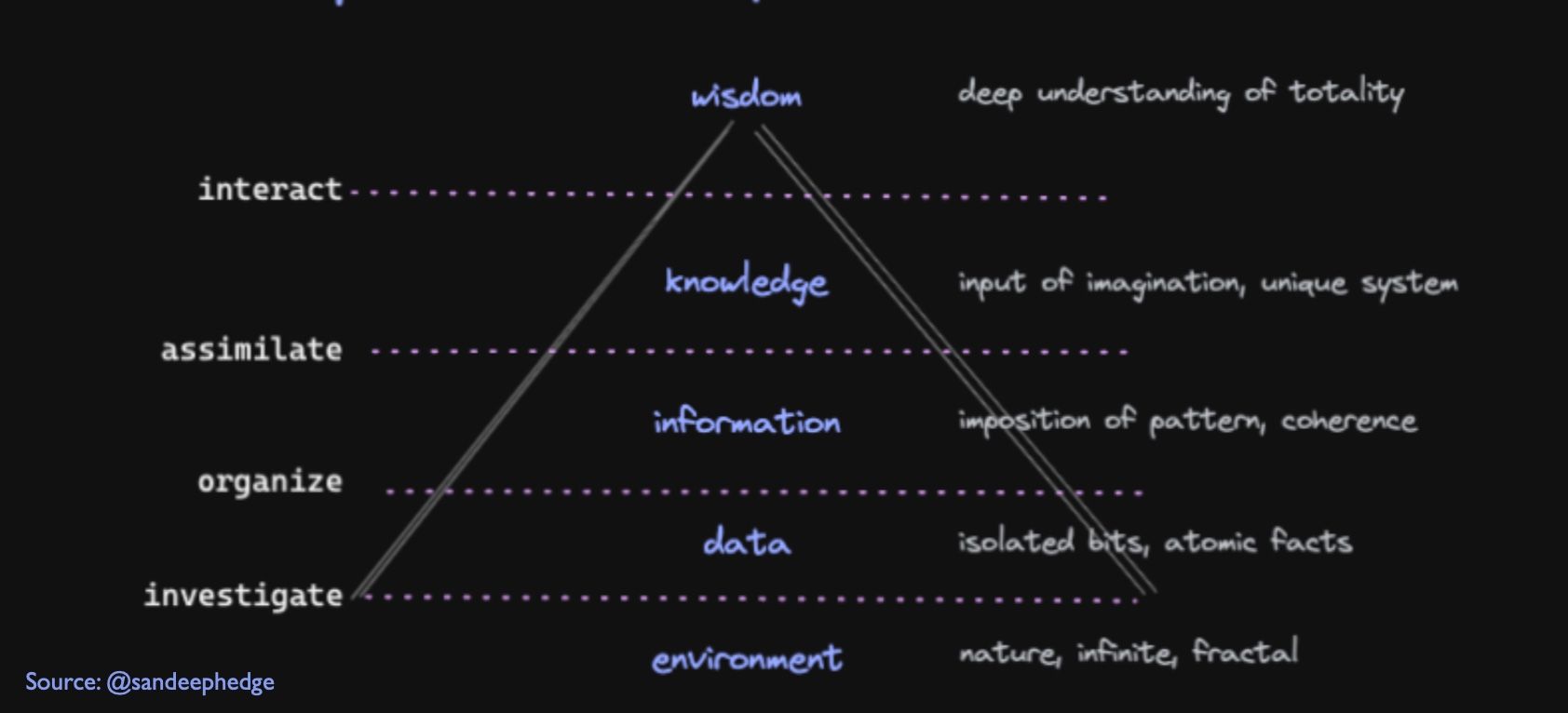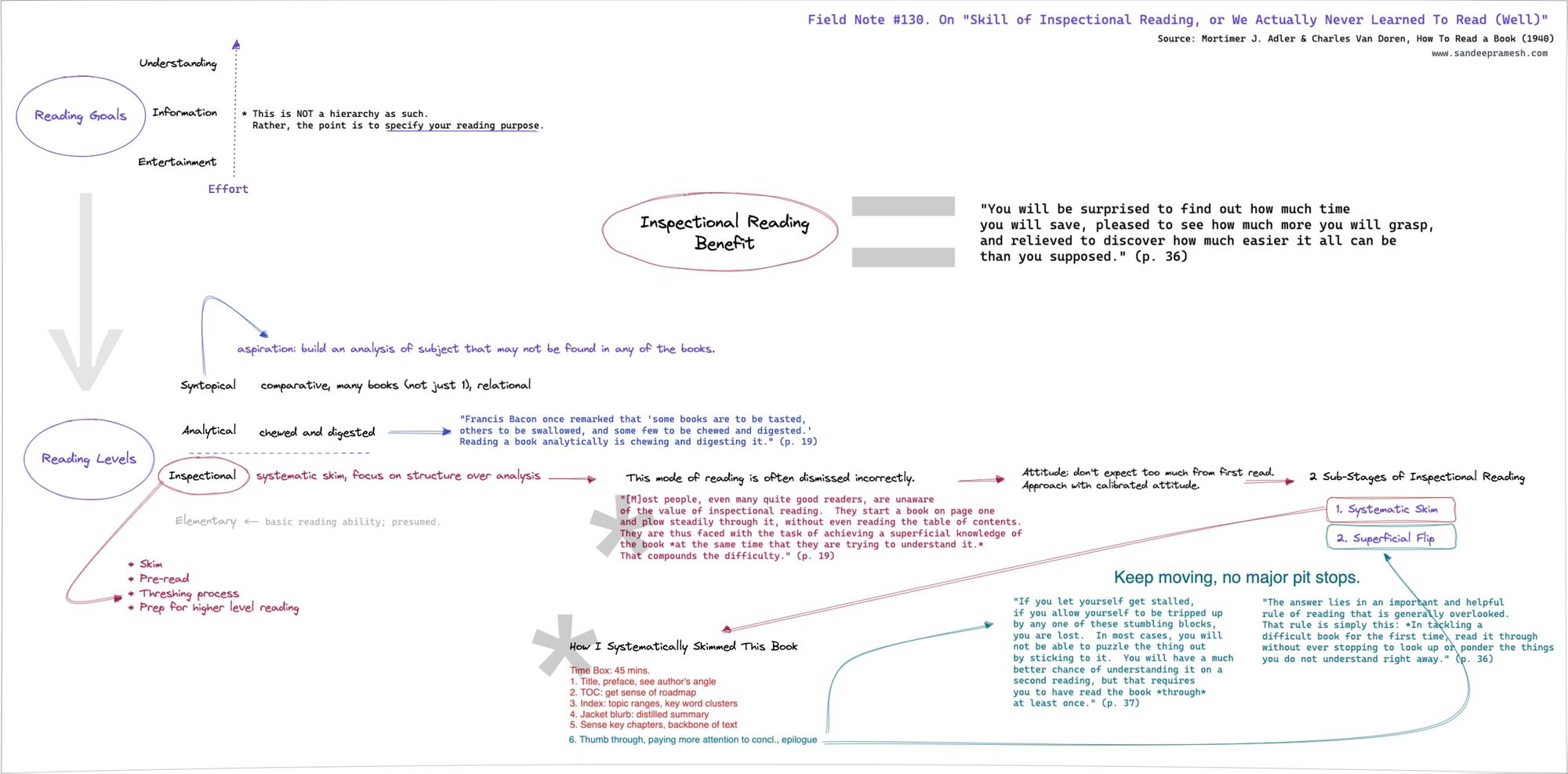Source: Mortimer J. Adler & Charles Van Doren, How To Read a Book (1940)
A. The Context
I have been spending more time considering how to scale the summit of Foskett's Pyramid, represented visually below (for more detail, see Field Note #48).

With the barrage advice from internet personalities impelling people to write more, what appears glaringly missing to me is serious attention paid to reading strategically and tactically.
This is not about reading more necessarily, but reading well.
And so, I am sitting inside this topic of "how to read," which at first blush appears so rudimentary that it is not worthy of deep consideration.
As I seek to improve my own reading methods and deploy them more tactfully in my professional investing and business-building work, my deeper aim is what C.S. Lewis has termed the second impulse:
B. The Details
In an effort to understand exactly what it means "to read well," I of course decided to spend time with the 1940 book on the topic, which was briefly discussed in Field Note #69 (On "Critical Reading + Investing).
I "inspectionally read" the text and produced some opening notes on the first "upgraded" reading skill... inspectional reading, which prioritizes getting a grasp of the material's structure prior to analysis.
Specifically, the steps I followed in the inspectional reading were as follows:
Time Box: 45 mins.
1. Title, preface, see author's angle
2. TOC: get sense of roadmap
3. Index: topic ranges, key word clusters
4. Jacket blurb: distilled summary
5. Sense key chapters, backbone of text
6. Thumb through, paying more attention to bookends
For avoidance of doubt, inspectional reading is only the first engagement with a text. If a text is worthy of additional attention (most probably are not), then one enters a substantially more effortful analytical reading mode (which I have not treated in this Note).
C.S. Lewis again, "The majority never read anything twice." (Lewis, p. 11 of Kindle ed.)
... We are not the majority.
The promised benefit of inspectional reading, according to Mortimer & Van Doren:
"You will be surprised to find out how much time you will save, pleased to see how much more you will grasp, and relieved to discover how much easier it can be than you supposed." (Mortimer & Van Doren, p. 36)
Indeed.
A mind map is appended.
